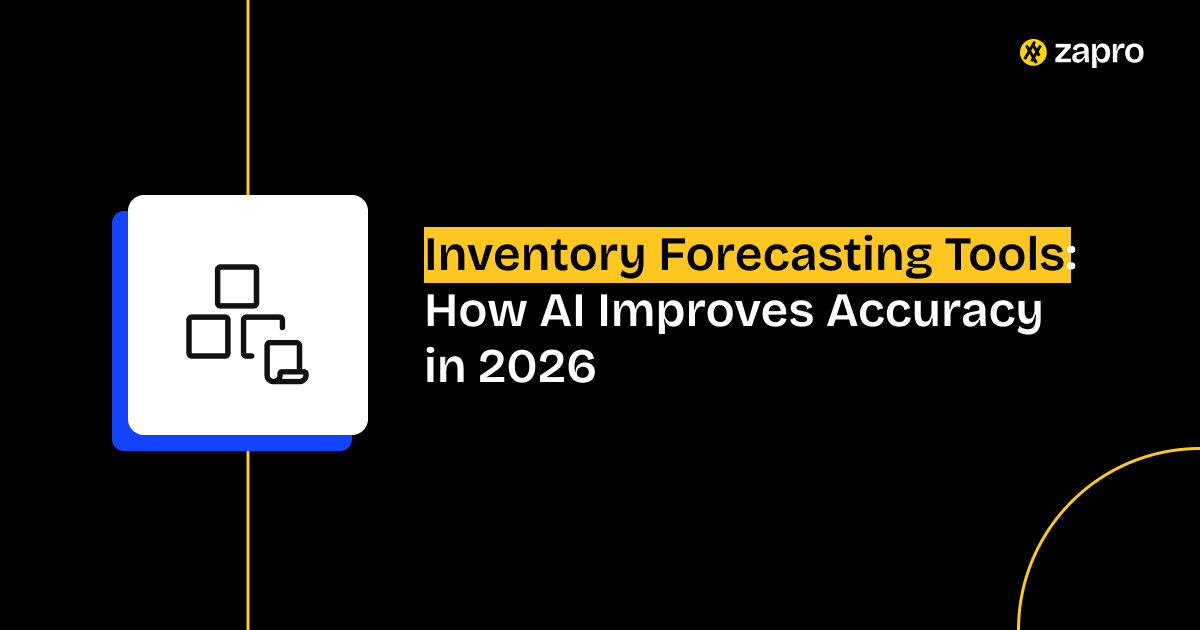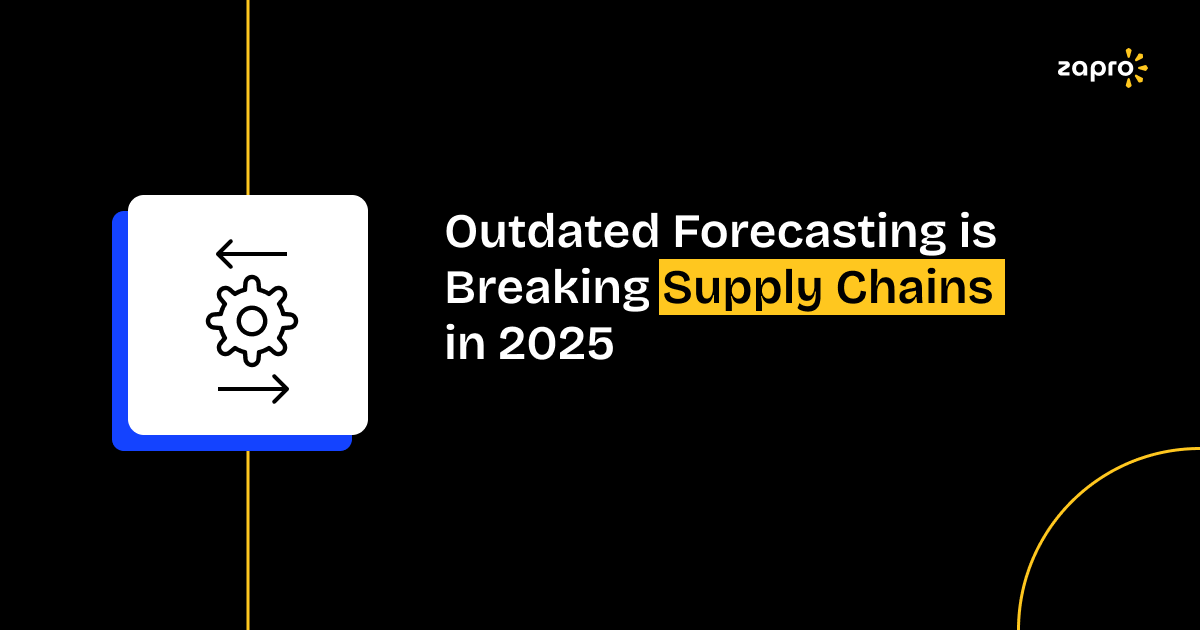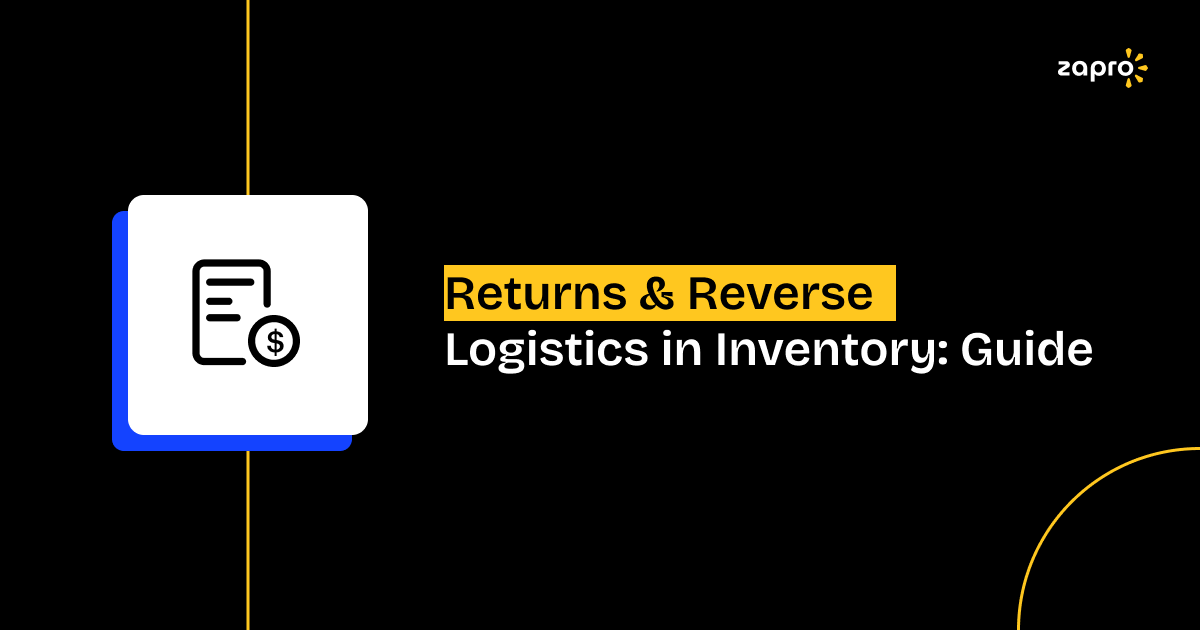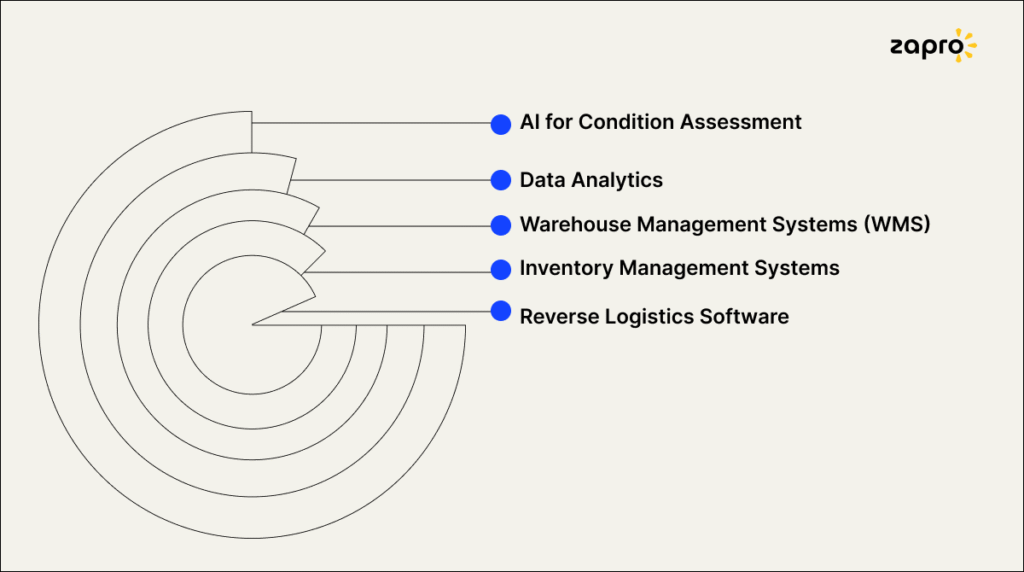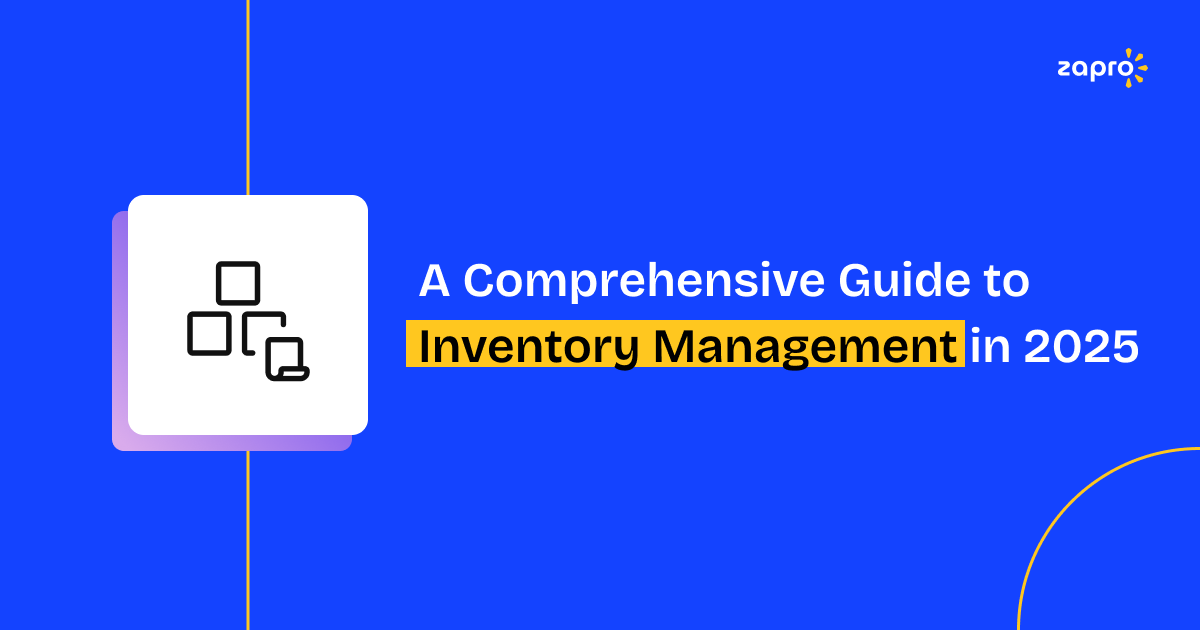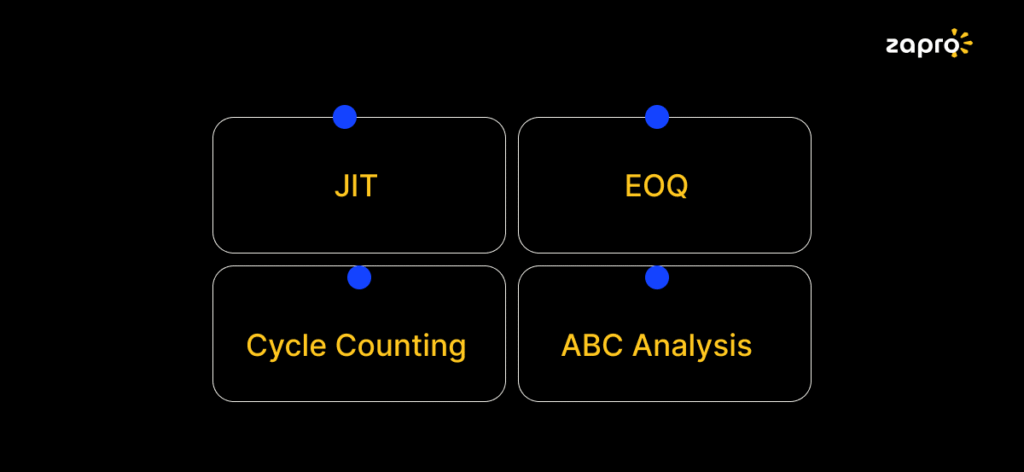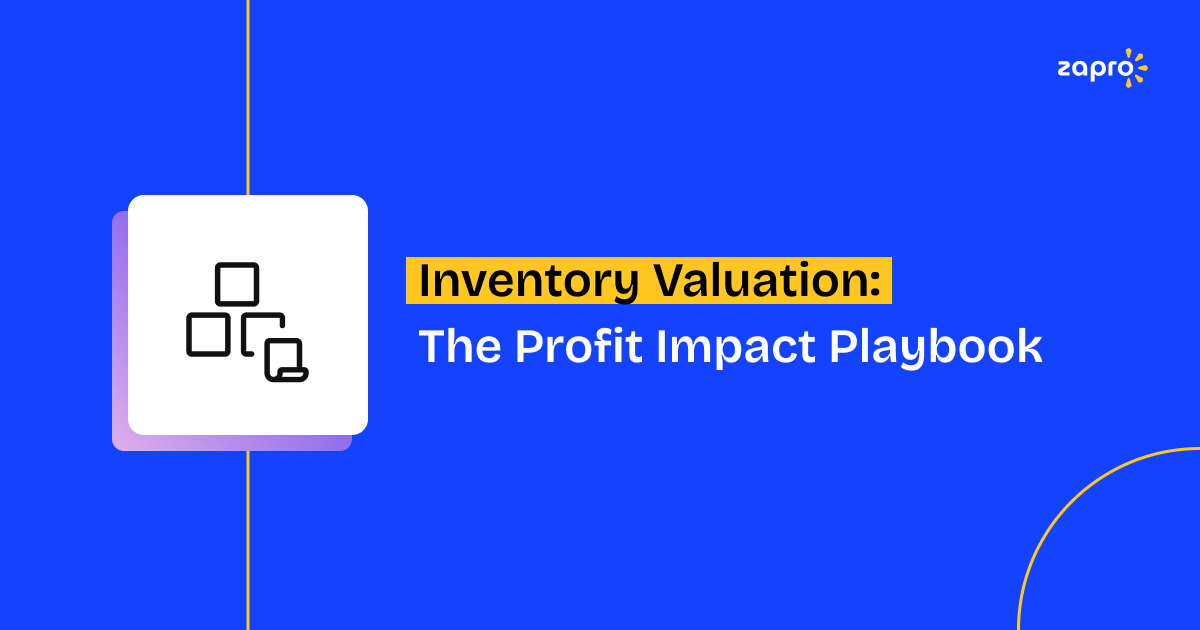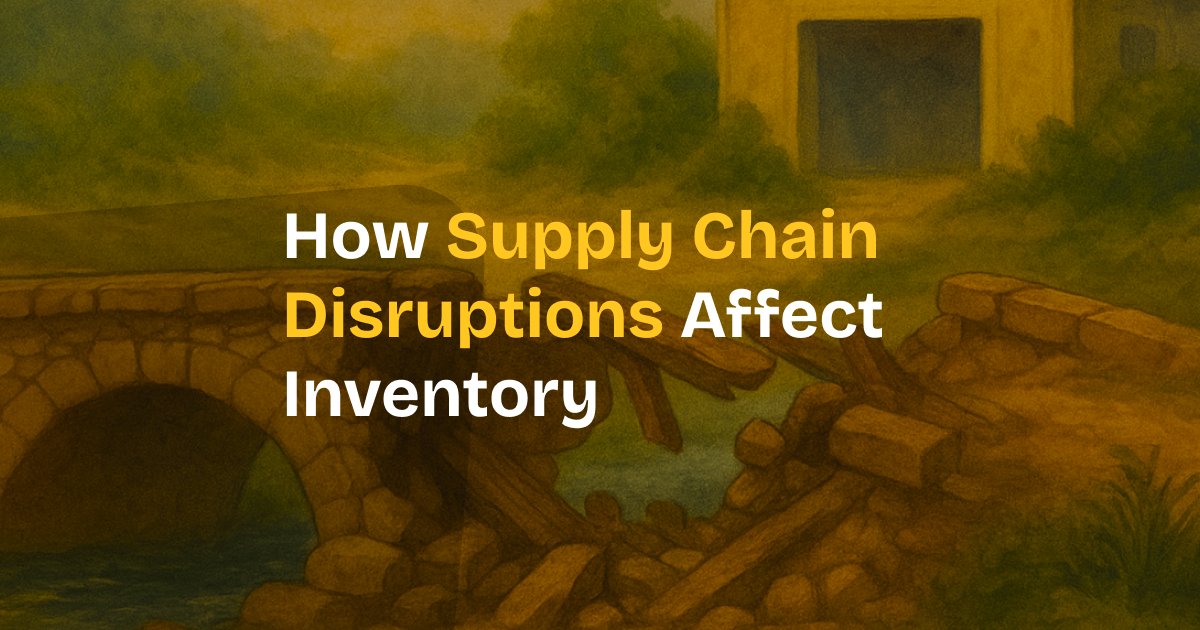The correct management of stock levels in supply chain management represents a matter of survival for businesses. The process of inventory forecasting used to be a time-consuming manual task which depended on instinct and spreadsheet data that did not change. The year 2025 brought us endless hours of work with historical data to predict what customers would do in the future.
The future of inventory management forecasting has arrived because AI technology has taken over inventory planning operations. Modern leading platforms use machine learning algorithms to predict future trends by analyzing social media patterns and local weather conditions.
Your business requires accurate inventory forecasting tools as its essential protection and operational instrument. The right tools help you avoid customer dissatisfaction from stockouts while protecting your business from wasting money on unused inventory that becomes obsolete. This guide explores the essential role of effective inventory forecasting software through an analysis of vital features and demonstrates how Zapro leads the market in 2026.
The Importance of Inventory Forecasting Tools
Why does getting your inventory forecasting right truly matter? Because the ripples of poor planning touch every part of your business.
Why Inventory Forecasting Matters
The fundamental principle of inventory forecasting involves achieving equilibrium between meeting customer needs and controlling storage expenses. Your goal is to fulfill upcoming customer requirements while keeping storage expenses at a minimum. Your operational efficiency and cash flow depend most heavily on achieving the right balance between supply and demand. Your business operates at risk when you lack effective inventory forecasting systems because you must predict customer behavior.
The Impact of Poor Forecasting
The consequences of bad forecasting are immediate and painful:
- Lost Revenue: Stockouts result in lost sales opportunities while simultaneously creating dissatisfied customers who choose to shop at alternative stores.
- Wasted Capital: The practice of over-forecasting inventory results in substantial working capital being locked up in products that could become useless.
- Operational Chaos: The failure of inventory demand forecasting leads to increased operational costs because it triggers emergency shipping and expediting fees and rush orders. The resulting impact on profitability and team morale becomes direct.
Role in Supply Chain Optimization
The foundation of supply chain optimization depends on accurate inventory management forecasting. It enables you to:
- Your purchasing operations become more efficient through proper alignment with demand requirements which helps you determine optimal supplier order quantities.
- Your warehouse needs less space because of reduced inventory levels which decreases storage expenses.
- The entire supply network runs as one cohesive system through procurement and fulfilment operations
How AI and Automation Have Changed the Landscape
Basic time-series analysis formed the foundation of legacy inventory planning solutions. The fundamental operations of inventory forecasting management have undergone a complete transformation through AI and automation systems. Modern inventory forecasting software uses machine learning algorithms that process millions of data points which include past sales data as well as promotional patterns and competitor prices and external market indicators. The system transforms uncertain predictions into specific data-driven recommendations.

70% of large-scale organizations will adopt AI-based forecasting to predict future demand by 2030
– Gartner
Top 13 Inventory Forecasting Tools and Solutions (2026)
Choosing the best inventory forecasting software requires businesses to consider their organization size and operational complexity together with their current technology infrastructure. The following list presents the most effective forecasting software solutions for 2026 based on expert evaluation.
| Tool | Key Differentiator & Best For | Standout Feature |
| Zapro | AI-powered procurement with inventory forecasting. Ideal for mid-market seeking unified S2P and inventory intelligence. | Real-time demand sensing integrated with automated PO generation. |
| NetSuite Demand Planning | Best for enterprise ERP users. Native solution for businesses already running NetSuite ERP. | Seamless multi-location forecasting within a single data model. |
| Blue Yonder (formerly JDA) | Best for retail and CPG with complex, large-scale distribution. | Deep prescriptive analytics and supply chain visualization. |
| o9 Solutions | Best for digital transformation focusing on integrated business planning. | Unified planning platform linking sales, finance, and operations. |
| Kinaxis RapidResponse | Best for complex supply chains requiring real-time concurrent planning. | Revolutionary concurrent planning engine for instant scenario testing. |
| RELEX Solutions | Best for retail chains and managing highly perishable goods. | Automated, machine learning-driven optimization for promotions and perishables. |
| Logility Voyager | Best for multi-tier supply networks and global sourcing complexity. | Advanced network design and optimization capabilities. |
| ToolsGroup SO99+ | Best for service level optimization and managing intermittent demand. | Predictive modeling focused on target service levels instead of pure demand. |
| Anaplan | Best for collaborative planning across finance, sales, and supply chain teams. | Flexible, cloud-based platform for connected planning across the enterprise. |
| SAP Integrated Business Planning (IBP) | Best for SAP ecosystems and integrating with S/4HANA for planning. | End-to-end cloud-based planning built on the SAP HANA database. |
| Oracle Cloud Supply Chain Planning | Best for Oracle users seeking a comprehensive cloud SCM suite. | Integrated SCM modules including demand, supply, and inventory planning. |
| Lokad | Best for quantitative supply chain optimization using probability forecasting. | Advanced statistical and probabilistic models for risk-based decisions. |
| Brightpearl | Best for omnichannel retailers needing fast order management and forecasting. | Unified platform for POS, fulfilment, and basic inventory forecasting tailored for e-commerce. |
The evaluation process of forecasting software solutions should focus on AI/ML algorithm-based platforms which provide advanced stock forecasting tools capabilities that extend past basic moving average calculations.
Key Features to Consider in Inventory Forecasting Tools
The selection of your future inventory forecasting software depends on its built-in features because they establish its long-term business value. These features should be your main selection criteria when choosing software:
- Real-Time Data Analytics: The system needs to handle data in real time because it enables immediate responses to unexpected changes in demand and supply problems.
- AI/ML-Driven Forecasting: AI/ML-Driven Forecasting stands as an essential requirement for achieving precise inventory demand forecasting. The system manages complex data points which human analysts cannot process.
- Historical Data Integration: The system requires a function to integrate historical data from various sources while maintaining data consistency for large datasets of sales returns and promotional information.
- Multi-Channel Support: Modern retail businesses need multi-channel support because it enables forecasting operations across e-commerce platforms and brick-and-mortar stores and marketplaces.
- Integration with ERP/CRM: The system requires integration with ERP/CRM systems to link forecast data with financial planning information and customer relationship management information.
- Customizable Forecasting Models: The system enables users to pick and optimize inventory forecasting methods including exponential smoothing and causal models based on their product requirements.
- Automation of Replenishment and Alerts: The system needs to perform automated reordering suggestions and alert generation when forecast predictions show substantial deviations from expected values.
Your chosen platform should transform intricate inventory forecasting techniques into practical operational steps for users.
Predict Demand with AI-Powered Accuracy

Implementing Inventory Forecasting Software
A new inventory planning solutions tool implementation requires change management efforts beyond software deployment. The following essential steps need to be followed:
1. Data Audit and Preparation
The quality of your data determines how well your inventory demand forecasting will perform.
- Historical Sales Data Requirements: Your system requires at least 2-3 years of clean sales data which should be organized by channel and region and promotional activities.
- Inventory Records Cleanup: The system records must match physical stock levels so you need to fix any existing discrepancies. The system requires accurate product master data and supplier information for proper operation.
- Supplier Information Gathering: Collect lead times, MOQ (Minimum Order Quantities), and pricing tiers for your critical vendors.
2. Pilot Program Planning
Don’t try to switch everything at once.
- Start with High-Value SKUs: The system testing should begin with essential SKUs that have high business value to evaluate performance and track initial outcomes.
- Define Success Metrics: The team needs to establish specific performance targets that include a 15% reduction in stockouts and a 10% decrease in average inventory holding time.
- Set Realistic Timelines: The project timeline needs to include sufficient time for employee training and system testing and problem resolution.
3. Team Training and Adoption
The success of inventory forecasting tools depends on how well your team members accept these new tools.
- Stakeholder Buy-in Strategies: The process of obtaining stakeholder support requires early involvement of finance and sales and operations leaders. The inventory management forecasting tool needs to show how it addresses particular difficulties that each stakeholder faces.
- User Training Best Practices: The training program should teach users about tool functionality and explain the significance of their data entries.
- Change Management Tips: The process demands patience from your team members. The team should acknowledge initial achievements because they create positive momentum during the transition period.
4. Integration and Testing
This is where the rubber meets the road.
- System Integration Planning: Map the data flow between the inventory forecasting software and your ERP (e.g., SAP, NetSuite).
- Parallel Run Approach: Run the new forecasting tool alongside your old methods for one full planning cycle to validate accuracy before fully committing.
- Accuracy Baseline Measurement: Establish your current forecast error rate so you can definitively measure the ROI of the new system.
5. Optimization and Scaling
Implementation is just the beginning.
- Continuous Improvement: Regularly review forecast accuracy and tune the model parameters.
- Expanding to More SKUs: Once success metrics are met with the pilot group, gradually roll out the inventory management forecasting solution to the rest of your catalog.
- Advanced Feature Adoption: Start using more complex features like “what-if” scenario planning and multi-echelon optimization.
Essential Features in Modern Inventory Forecasting Tools
The future of inventory forecasting will depend on intelligent systems which connect to each other. The leading forecasting software solutions differentiate themselves through their AI and machine learning capabilities.
AI and Machine Learning Capabilities
The system uses this technology to generate precise inventory demand forecasting:
- Predictive Accuracy Improvements: The system enhances its predictive accuracy through continuous data updates which allow AI models to improve their forecasting performance.
- Self-Learning Algorithms: The system develops its own methods to determine which factors among weather and promotions should receive more weight in its calculations.
- Real-Time Adjustments: The system enables real-time adjustments of forecasts through current sales data to stop major forecasting mistakes from occurring.
- Anomaly Detection: The system identifies abnormal demand patterns which trigger human assessment to direct team resources toward critical areas.
Demand Forecasting Methods
A complete platform provides organizations with multiple inventory forecasting techniques:
- Time Series Analysis: The system includes Time Series Analysis for baseline forecasting through moving averages and exponential smoothing methods.
- Causal Forecasting: The system uses external variables such as price and marketing expenditure and GDP to generate demand predictions through causal forecasting.
- Multi-Variable Modeling: The system applies complex algorithms to evaluate numerous internal and external factors which determine its output.
- Seasonal Decomposition: The system performs seasonal decomposition to extract trend patterns and seasonal fluctuations and residual noise from demand data.
Integration Capabilities
Your supply chain inventory planner receives its operational strength from the level of connectivity established between systems:
- ERP Systems (SAP, Oracle, NetSuite): The system requires native deep integration with ERP platforms such as SAP and Oracle and NetSuite for synchronized master data and financial reconciliation.
- E-commerce Platforms (Shopify, Amazon, etc.): The direct connection between your e-commerce platform and sales channels enables instant demand signal collection.
- Procurement Systems (emphasize Zapro’s advantage): Zapro stands out from other inventory planning solutions because it links forecasted demand directly to automated Purchase Order generation for faster loop closure.
- WMS and 3PL Systems: The integration of WMS and 3PL Systems through the system enables precise stock tracking and lead time information management.
- API Availability: API Availability provides organizations with the ability to establish connections between their proprietary systems and specialized internal applications.
Collaboration Features
Your stock forecasting tools need to support team collaboration because forecasting requires multiple participants:
- Supplier Portals: The system enables vendors to access supplier portals which allow them to view forecasts and production schedules for better capacity planning.
- Cross-Functional Planning: The system provides tools that help Sales and Inventory and Operations Planning teams to work together through cross-functional planning.
- Exception Management: The system uses automated exception management to identify critical stockouts which then get assigned to specific team members for resolution.
- Communication Tools: The forecast module includes built-in communication tools that enable users to send messages and comments.
Reporting & Analytics
Your inventory forecasting techniques need continuous improvement through the following features:
- Customizable Dashboards: The system provides customizable dashboards which present simple visual data for all users to understand.
- Forecast Accuracy Tracking: The system evaluates model performance through MAPE and bias measurements and additional key performance indicators.
- What-if Scenario Planning: The system enables users to run what-if scenarios which help them understand how new promotions and supplier delays affect inventory levels.
- KPI Monitoring: The system tracks essential performance indicators which include fill rates and obsolescence risk and holding costs.
Automation Capabilities
Inventory management forecasting exists to create automated decision-making processes:
- Automated Reorder Points: The system uses forecast volatility and service level targets to adjust safety stock levels and reorder quantities automatically.
- Purchase Order Generation: The system generates purchase orders through automated processes which planners can review before final approval.
- Alert and Notification Systems: The system generates instant alerts for stockout risks and overstock situations and forecast prediction errors.
- Workflow Automation: The system uses automated workflows to direct exceptions and approval requests for quick resolution.
Learn about procurement software comparision.
Summary
The practice of using intuition together with spreadsheets for inventory forecasting has become obsolete. AI-powered inventory forecasting tools now deliver enhanced accuracy while creating a complete transformation of cash flow management and customer loyalty and operational performance.
A modern AI-first platform provides the necessary speed and agility which today’s business environment demands while SAP Ariba and NetSuite deliver strong solutions. Zapro connects real-time inventory demand forecasting to a single procurement system which automates purchasing operations.
Select a supply chain inventory planner that integrates intelligence into purchasing decisions to maximize every dollar spent on inventory for better profitability.

Smarter Inventory Starts Here
Cut excess inventory, prevent stockouts, and maximize profitability.
FAQs
1. How do I forecast inventory?
The process of inventory forecasting involves studying historical sales data together with seasonal patterns and customer demand trends to determine upcoming stock requirements. The correct inventory levels between overstocking and stockouts can be achieved through this method which optimizes operational flow and reduces costs.
2. What is AI inventory forecasting?
AI inventory forecasting systems employ machine learning algorithms to process extensive datasets which enables them to generate precise predictions about upcoming inventory requirements. The system adjusts its predictions based on current market trends and supply chain movements and real-time demand patterns.
3. What is the best tool for forecasting?
The selection of the best forecasting tool depends on business size and requirements because Zapro and NetSuite and SAP provide advanced automation and analytical features. The system unifies data acquisition with demand forecasting and purchase planning operations into a single platform.
4. What are the types of inventory forecasting?
The four main forecasting methods consist of qualitative forecasting and time-series analysis and causal models and demand-driven forecasting. The selection of forecasting method depends on both the available data types and the business requirements for decision accuracy.
5. How to Implement Inventory Forecasting Tools Effectively?
Your first step should involve connecting your forecasting system to sales and procurement and inventory management platforms for precise data exchange. The team needs training and you should evaluate forecasting accuracy on a regular basis to enhance both operational performance and decision-making decisions.

 Healthcare
Healthcare Financial Services
Financial Services Technology
Technology Venture Capitalist
Venture Capitalist Chief Procurement Officer
Chief Procurement Officer Chief Financial Officer
Chief Financial Officer
